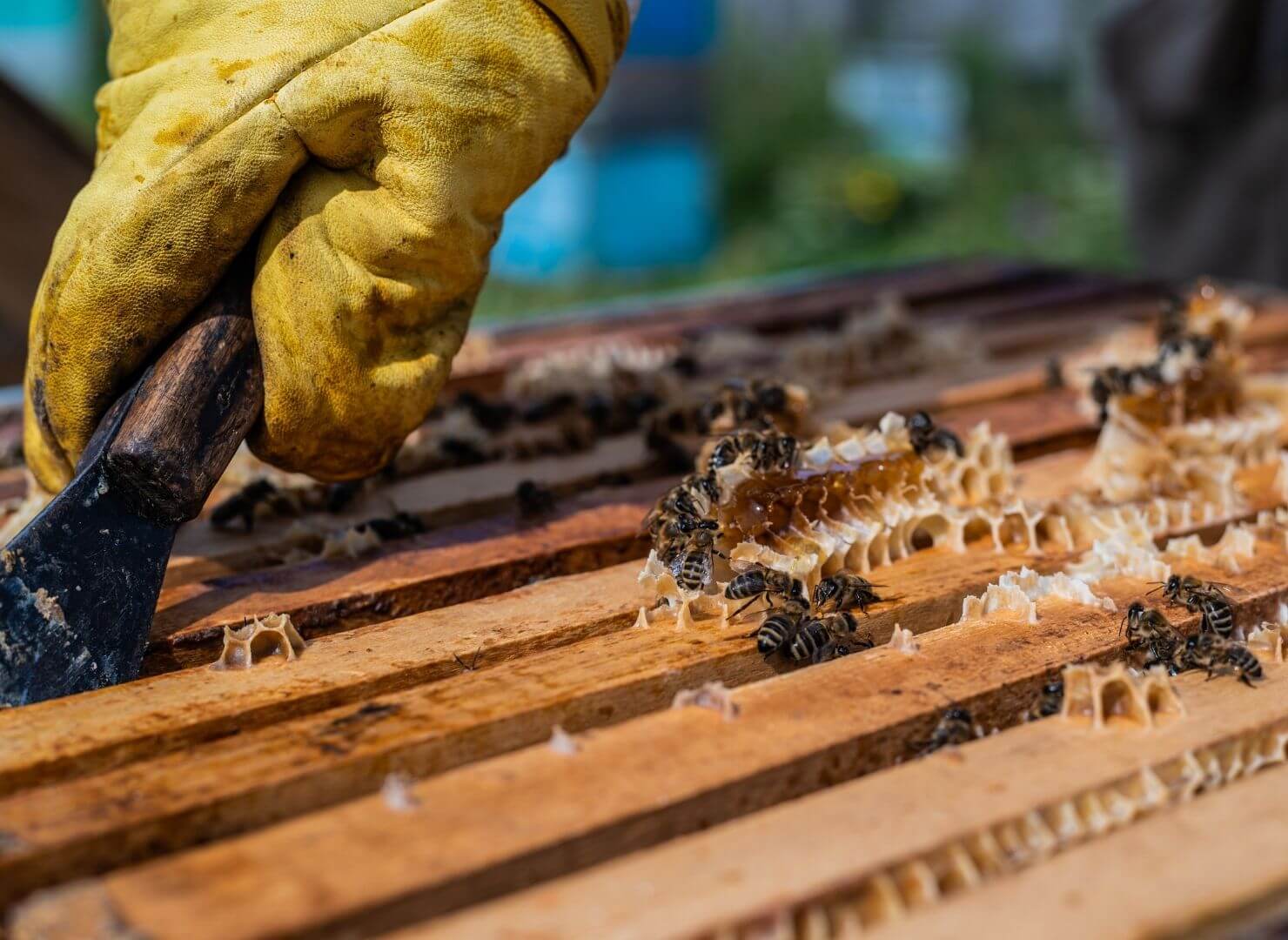African Elephants and Bees
Conservation Story
Bees Change Lives and Save Elephants
Learn how the Save the Elephants campaign is managing elephant crop raiding and retaliatory hunting!
The Largest Land Mammal
Ecosystem Engineer
African elephants are a vital part of the savanna and without them, the savanna simply would not be the savanna. African elephants help disperse seeds in their nutrient-rich dung across thousands of miles allow the vegetation to grow consistently. They dig holes to reach water and knock down trees to reach more food, altering the layout of the environment. They forge pathways through dense vegetation that can be used by other animals. Through the destruction they leave in their wake, they create homes and protection for reptiles and amphibians.
African elephants alter the landscape and allow for a large diversity of species. They are ecosystem engineers, meaning they are a species whose presence maintains, changes, or destroys an ecosystem. Beavers are ecosystem engineers, too. Check it out.
So, What's the Problem?
Elephants can migrate hundreds of miles in a single year, requiring huge amounts of healthy ecosystem for a thriving elephant population. This is becoming more challenging as African communities expand into regions once dominated by elephants.
1
Poaching for Ivory
Poaching for African elephant tusks is still the largest threat to their survival. Thousands of elephants are illegally killed each year for their ivory tusks. The tusks are sold on the black market and turned into carvings, jewelry, and other trinkets. The ivory is also used in Traditional Chinese Medicine. Though it is illegal, China and the United States are the two largest consumers of ivory in the world.
2
Human Expansion
As communities grow, they require more resources and new farms to sustain the population. Farms are often created in areas that used to be elephant habitat which has led to growing interactions between elephants and people. Elephants have even been known to destroy and invade stores and even homes.
3
Retaliatory Hunting
Though fences and other preventative measures have been tried, elephants often feast on crops and trample everything they don't eat. Entire farms have been destroyed in a matter of hours. Farmers who depend on the sale of their crops to support their livelihood will often take matters in to their own hands to prevent their crops from being destroyed. They will throw fire crackers or make sudden noises to scare the elephants away which can cause the elephants to become aggressive. And this is what we are going to focus in on.
Areas that used to be high-traffic elephant migration routes are now newly developed cropland.
The risk of human-elephant conflict continues to grow as the human population does.
A New Method
For years, different methods have been tried to protect crops from elephants. Electric fences have been installed in many regions across Africa, but these fences block elephant migration routes and are often don't work.
Through talking to local villagers in Kenya, researchers discovered elephants are afraid of bees and will vocalize and flee when they accidently brake open a hive.
African honey bees release a pheromone (chemical) when they sting that encourages other bees to sting the same area, which is usually around the eyes and mouth.
To understand how the elephants would respond to bees, researches played bee noises and watched the elephants' behavior.
They found the elephants would become highly agitated and run away from the sound while throwing dirt around to knock the bees away.
Time To Get Creative
Thinking Outside the
Box (Or Hive)
Scientists used this new discovery to come up with an efficient away to keep elephants away from farms and communities: beehive fences.
Hives on the Frontline
Beehive boxes are strung around small farms in the vulnerable parts of Africa were human-elephant conflict is high. For one acre, 12 real hives and 12 fake hives are strung around the perimeter of the farm.
Calling the Bees to Action
As elephants approach and run into the string, they swing the boxes and irritate the bees, causing them to exit their hives.
A Lesson Learned
As the bees emerge, the elephants will flee and hopefully remember not to come back to that area in the future.
Major Benefits
Fence Success
Beehive fences are monitored with camera traps and have shown more than 80% of elephants staying outside of the fences.
Pollination
Because of the presence of the bees, more crops are being pollinated resulting in a higher yield and income for farmers.
Honey
The African honey bees produce honey which is collected and sold by the farmers locally and to other parts of Africa.
Make a Difference for Elephants
Avoid Ivory
Avoid purchasing any products that contain ivory, regardless of when or where it was harvested.
Shop Responsibly
Make sure to buy wood/paper products that are certified by FSC and Fair Trade Certified coffee to protect elephant habitats.
Visit Accredited Zoos
If you are going to see elephants in real life, use this checklist to ensure the zoo has high standards of animal care and contributes to conservation.
Financial Donations
Donate to the Elephants and Bees project or Disney's Conservation Fund to support beehive fences.





